The best exercises for seniors aren’t just about staying fit—they’re about improving flexibility, balance, and strength while enhancing your overall quality of life. Staying active has been a game-changer for me, and I’ve seen firsthand how the right exercises can transform your health as you age. Whether you’re looking to ease joint pain, boost your energy, or move through your day more confidently, incorporating the right workouts can make all the difference. Plus, staying active helps keep chronic conditions like heart disease and diabetes at bay, letting you enjoy life to the fullest.
Over time, I’ve discovered that even gentle, low-impact exercises can deliver incredible benefits. From soothing yoga sessions to simple strength training, there’s something for everyone, no matter your fitness level. I’m excited to share what I’ve learned and help you find the perfect exercises to fit your lifestyle. Let’s explore some of the best ways to stay strong, feel great, and confidently embrace aging.
Top Senior-Friendly Workouts for Strength and Vitality
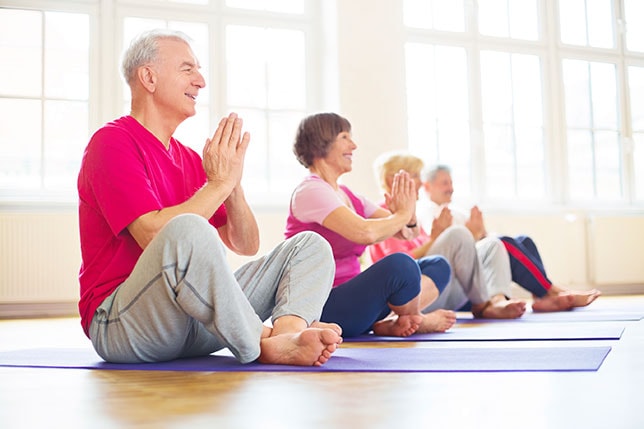
Exercise plays a massive role in keeping us healthy and vibrant, especially as we advance in years. Regarding the best exercises for seniors, physical activity isn’t just about staying in shape; it deeply influences overall well-being. Incorporating regular exercise can significantly boost independence in daily life.
Engaging in consistent physical activity means keeping those muscles strong, joints flexible, and balance sharp. It enables seniors to perform everyday tasks more easily, leading to a more independent and fulfilling life. Mental health and cognitive functions can see fantastic improvements with regular exercise.
There’s a strong link between movement and mood. Physical activity releases endorphins, the ‘feel-good’ hormones, which help reduce feelings of anxiety and depression. Plus, studies show exercise can delay or even improve cognitive decline, keeping the mind sharper longer. The habit of exercising packs the real punch, not necessarily how hard we push ourselves. Consistency is the key here. Choosing activities we enjoy makes it easier to stick with a routine, and the benefits accumulate over time, contributing to a healthier lifestyle.
Key Highlights
-
Improved Flexibility, Balance, and Strength: Regular exercise helps seniors stay mobile, maintain balance, and build strength, enhancing overall quality of life.
-
Mental and Physical Health Benefits: Physical activity boosts physical independence and improves mental well-being by reducing stress and supporting cognitive function.
-
Low-Impact Options for All Fitness Levels: Gentle workouts like yoga, walking, and swimming cater to diverse fitness abilities, making exercise accessible and enjoyable for seniors.
-
Consistency and Adaptability: Staying active through routines tailored to individual needs ensures long-term success and allows adjustments based on health changes.
-
Social and Enjoyable Activities: Joining group classes or engaging in hobbies like dancing and gardening keeps exercise fun and socially rewarding.
Setting Realistic Fitness Goals
Setting fitness goals that fit your lifestyle is crucial. Personalized plans can keep you motivated and heading in the right direction. You want goals that suit your needs and abilities, not someone else’s.
Figured it Out
Regarding fitness, consider what areas to boost: strength, flexibility, balance, or endurance. Everyone’s different, so figuring out what matters most to you is a good start. Maybe you want to walk without getting tired or master a few yoga poses.
It’s all about finding that spot between being active and giving your body enough rest. Too much exercise can lead to burnout or injuries; no one wants to deal with that.
Track It!
Tracking your progress is something worth trying. It might sound geeky, but fitness journals or apps can work wonders. Seeing how far you’ve come can motivate and help adjust those goals when needed.
Consult with a Healthcare Professional
Before starting any fitness routine, it’s crucial to consult with your doctor or a physical therapist. They can evaluate your current health, identify any limitations, and recommend safe and suitable exercises. By offering personalized guidance, they’ll help you set realistic goals tailored to your needs and fitness level, ensuring a safe and effective journey toward improved health.
Make it Enjoyable
Discovering exercises you enjoy is the key to sticking with an active lifestyle. Instead of forcing yourself into workouts you dislike, explore different options until you find something that brings you joy. Whether it’s dancing, swimming, or yoga, there’s an activity out there that fits your interests. Exercising with a friend or joining a group class can improve the experience, adding social interaction and a boost of motivation to keep you going.
Slow and Steady Wins the Fitness Game
Patience and consistency are the secret ingredients to fitness success. Progress takes time, so don’t be discouraged if results aren’t immediate. Instead, celebrate small victories and stay focused on maintaining a steady routine. Every step counts toward achieving your goals!
Strength Training to Maintain Muscle Mass
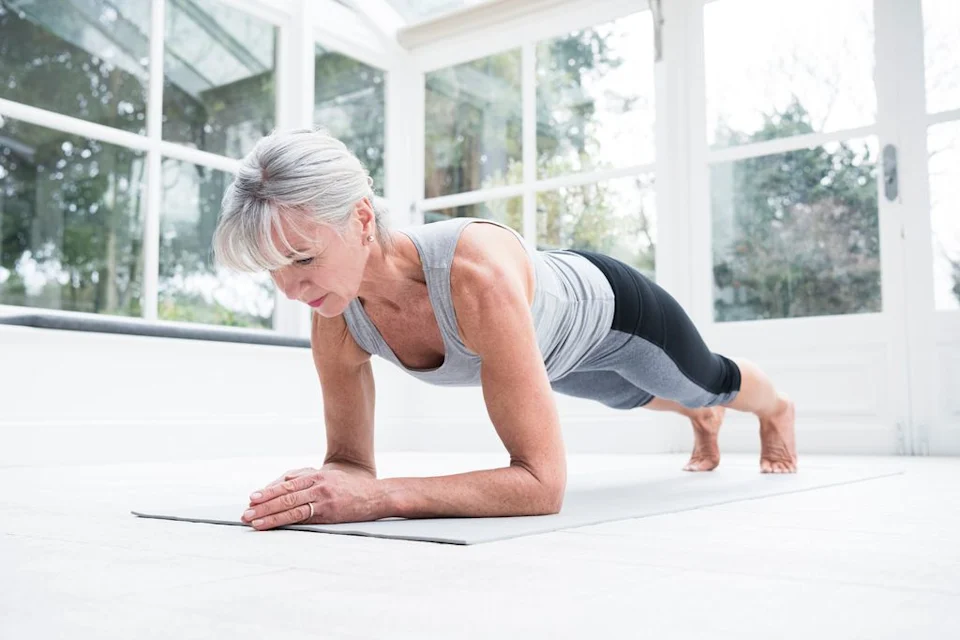
Keeping up with strength training is like holding on to your youth. As we age, our muscles naturally want to relax a bit too much, leading to a loss of muscle mass. However, incorporating the best exercise for seniors into your routine helps keep those muscles engaged, preserving strength and energy.
Strength training is essential for seniors to combat the natural decline in muscle mass that comes with age. Incorporating effective exercises into your routine can help maintain strength, balance, and overall well-being. Below are some highly recommended options:
Bodyweight Exercises
-
Squats: Target the legs, glutes, and core. Use a chair for support if needed.
-
Lunges: Similar to squats but offer added balance and coordination benefits.
-
Push-ups: Strengthen the chest, shoulders, and triceps. Modify by doing them against a wall if necessary.
-
Plank: Ideal for improving core strength and stability.
-
Glute Bridges: Strengthen the glutes and hamstrings.
Resistance Band Exercises
-
Rows: Work the back muscles for better posture and strength.
-
Chest Presses: Target the chest and shoulder muscles.
-
Leg Lifts: Focus on strengthening the abdominal area.
-
Bicep Curls: Build arm strength by working the biceps.
-
Tricep Extensions: Help strengthen the triceps for improved arm function.
Weight Lifting
-
Dumbbell or Barbell Exercises: Include bicep curls, tricep extensions, shoulder presses, rows, and deadlifts (if suitable). Start with light weights, gradually increasing as your strength improves.
Important Considerations for Seniors
-
Consult with a Doctor or Physical Therapist: Always seek medical advice before starting a new exercise program, especially if you have any health concerns.
-
Focus on Proper Form: To prevent injuries, ensure correct technique. Consider working with a certified trainer specializing in senior fitness.
-
Start Slow and Progress Gradually: Begin with a few repetitions and increase sets as your strength builds.
-
Listen to Your Body: Rest when needed and avoid overexertion, particularly in the beginning.
-
Make it Enjoyable: Choose exercises you enjoy to stay motivated and consistent.
By incorporating these strategies, seniors can maintain their independence, boost their energy, and improve their quality of life.
Gentle Cardio Workouts for Heart Health
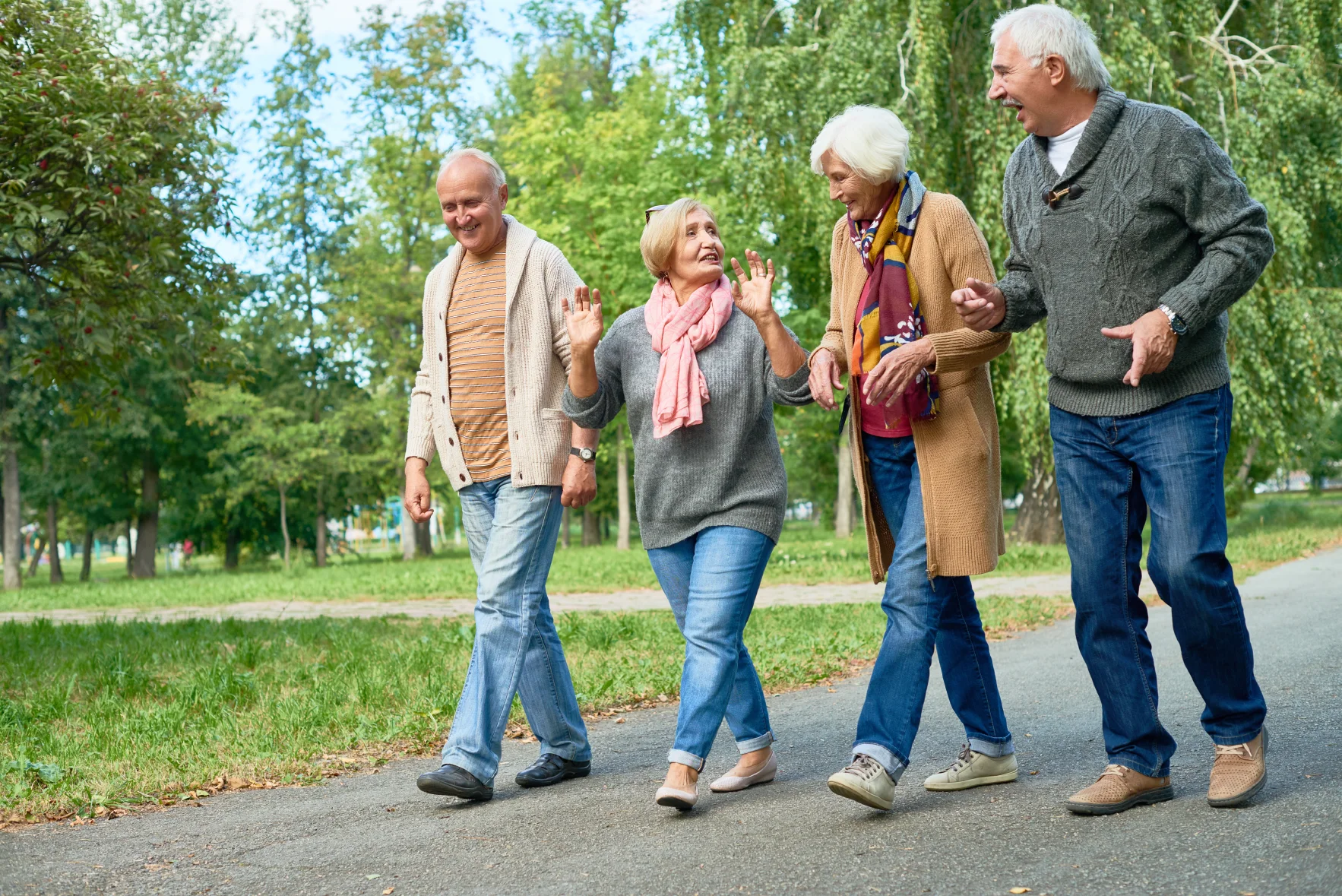
Keeping your heart healthy is crucial, especially as you get older. The best exercises for seniors include low-impact cardio workouts that effectively balance staying active and caring for your heart. Gentle cardio workouts are vital for maintaining heart health in seniors. Here are some great options to consider:
Walking
-
A simple yet effective way to get your heart pumping.
-
Start with short distances, gradually increasing both duration and pace.
-
Walking outdoors offers the added benefits of fresh air and sunshine.
Walking
- A simple yet effective way to get your heart pumping.
- Start with short distances, gradually increasing both duration and pace.
- Walking outdoors offers the added benefits of fresh air and sunshine.
Cycling
-
Whether using a stationary bike or cycling outdoors, this is a fantastic way to boost cardiovascular fitness.
-
Adjust the resistance based on your fitness level.
-
Join a cycling group for motivation and social support.
Dancing
-
A fun way to get your heart rate up.
-
Line dancing, ballroom dancing, or simply dancing to your favorite music at home can all be beneficial.
Best Exercises For Seniors: Enhancing Balance and Coordination
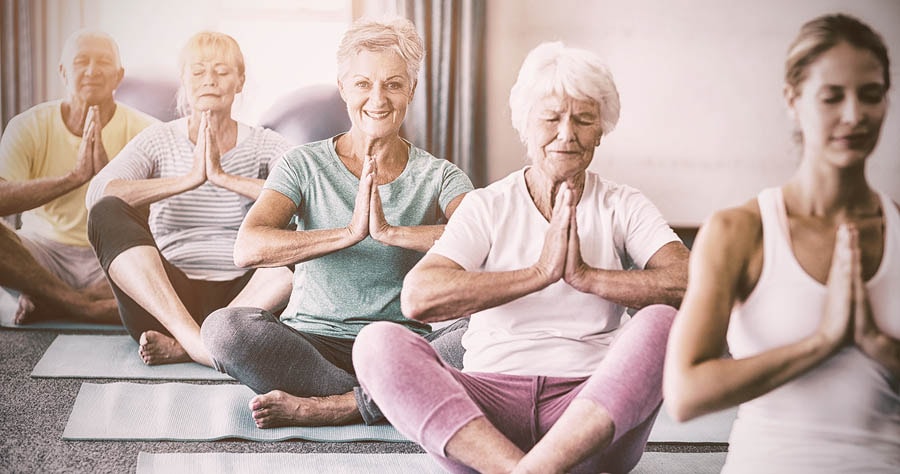
Improving balance is key to staying safe and independent as we age. Balance exercises are great for keeping steady and reducing the risk of falls.
Tai Chi
-
An ancient Chinese practice involving slow, flowing movements paired with deep breathing.
-
It helps improve balance, flexibility, and cardiovascular health.
-
Many community centers and senior centers offer Tai Chi classes.
Yoga
-
Many forms of yoga involve gentle movements and breathing techniques that support cardiovascular health.
-
Look for beginner-friendly classes designed specifically for seniors.
These balance exercises can easily fit into existing workout routines. Even simple practice a few times a week can lead to significant improvements.
Tracking progress with these exercises can build confidence. Seeing steady improvement helps you gain assurance in your abilities and encourages you to try more challenging maneuvers over time.
Flexibility Routines for Improved Mobility
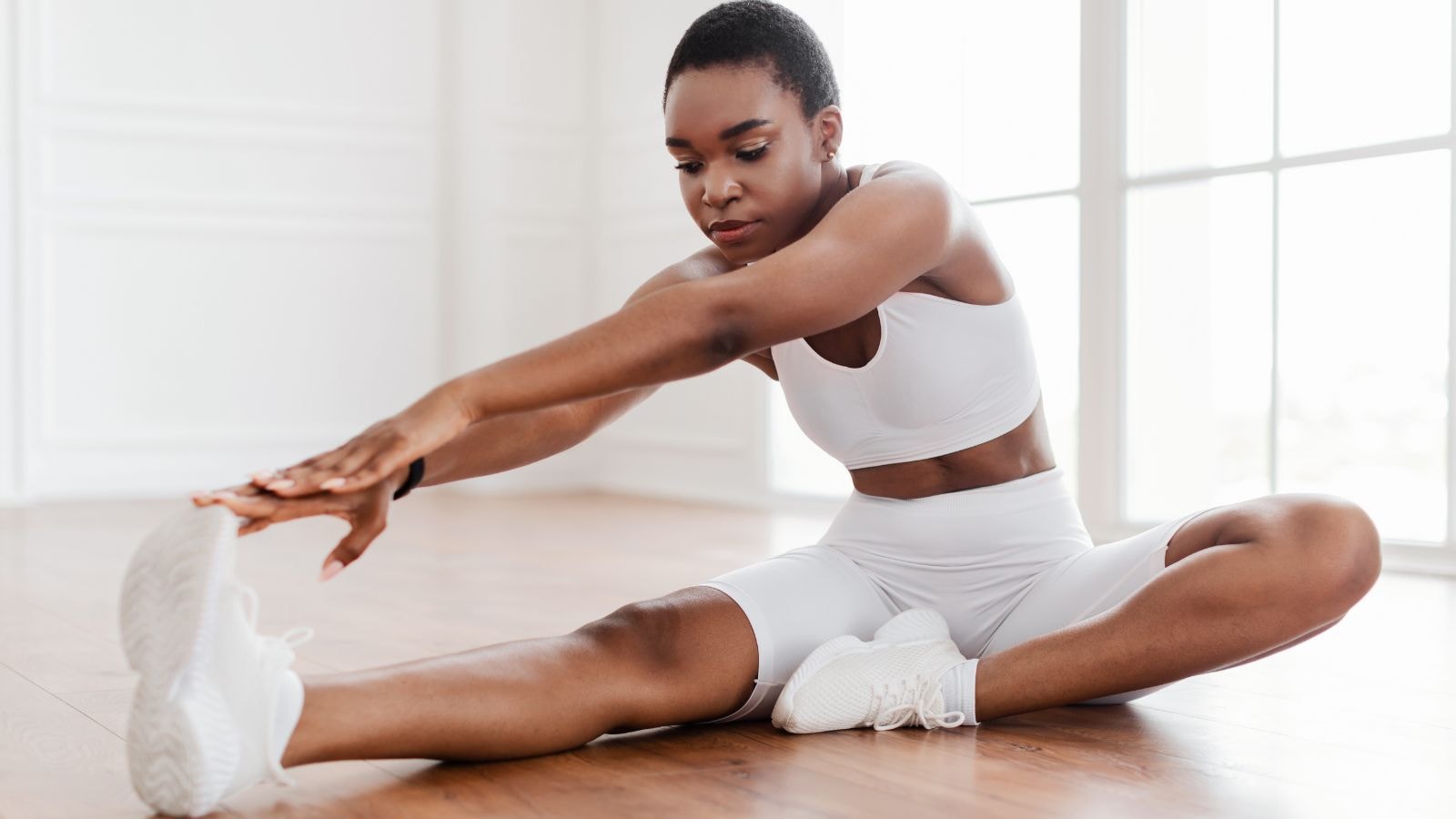
Flexibility is essential for seniors to support mobility, preserve independence, and reduce the risk of falls. Incorporating the best exercises for seniors can help improve flexibility and maintain a healthy, active lifestyle. Here are some gentle flexibility exercises to include in your routine:
Seated Forward Bend
-
Sit upright in a chair.
-
Extend one leg straight out in front of you.
-
Lean forward gently from the hips, reaching toward your toes.
-
Hold for 30 seconds, then switch legs.
Seated Forward Bend
- Sit upright in a chair.
- Extend one leg straight out in front of you.
- Lean forward gently from the hips, reaching toward your toes.
- Hold for 30 seconds, then switch legs.
Quadriceps Stretch
-
Stand near a chair or wall for support.
-
Bend one knee, pulling your heel gently toward your buttocks.
-
Hold for 30 seconds, then switch legs.
Shoulder Rolls
-
Roll your shoulders forward in a slow, circular motion.
-
Reverse the direction and roll them backward.
-
Repeat 10 times in each direction.
Shoulder Rolls
- Roll your shoulders forward in a slow, circular motion.
- Reverse the direction and roll them backward.
- Repeat 10 times in each direction.
Neck Stretches
-
Gently tilt your head to the right, then to the left.
-
Slowly turn your head to look over each shoulder.
-
Lower your chin to your chest, then tilt your head slightly back.
Making Exercise a Lifelong Habit
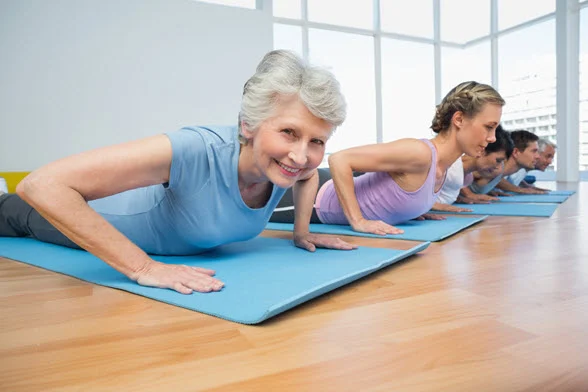
Creating a supportive environment goes a long way in encouraging regular physical activity. Whether setting up a small home workout space or finding a local park, having a dedicated area can motivate you to stick to your routines.
Finding joy in your activities keeps exercising from feeling like a task. When you enjoy what you’re doing, exercise ceases to feel like work and becomes something you look forward to. Your exercise needs might shift as health conditions change, and that’s perfectly okay. Adaptability is key to maintaining a successful and sustainable fitness routine.
Leveraging technology and online resources can provide fresh ideas and inspiration, whether following workout videos or joining virtual fitness groups. The digital world offers endless opportunities to keep exercising exciting and engaging.
Here’s an additional video about exercises for seniors.
By: Body Fix Exercises
Embracing Fitness for a Healthier Lifestyle
Incorporating regular exercise into daily life is one of seniors’ best steps to enhance physical and mental well-being. Activities such as strength training, gentle cardio, and flexibility exercises not only promote independence but also improve balance, energy levels, and overall health. Staying active helps prevent chronic conditions, reduces the risk of falls, and supports a more fulfilling, vibrant lifestyle.
Consistency and enjoyment are key to maintaining a long-term fitness routine. By finding exercises that bring joy and adapting them to personal needs, seniors can make staying active a rewarding habit. With a commitment to regular movement, embracing aging with vitality, confidence, and a renewed sense of purpose is possible.
FAQs: Best Exercises for Seniors
What Are the Best Types of Exercises for Seniors?
The best exercises for seniors include strength training, balance exercises, cardio activities like walking or swimming, and flexibility exercises such as yoga or stretching. These activities help maintain muscle strength, improve coordination, enhance cardiovascular health, and increase mobility, essential for staying active and independent.
How Often Should Seniors Exercise?
Seniors should aim for at least 150 minutes of moderate-intensity aerobic activity per week, along with two sessions of strength training targeting major muscle groups. Incorporating balance and flexibility exercises into the routine 2-3 times a week can further enhance overall fitness and prevent falls.
Are There Any Safety Tips Seniors Should Follow When Exercising?
Yes, safety is crucial. Seniors should start slowly and gradually increase intensity, stay hydrated, and wear comfortable, supportive footwear. Listening to the body and stopping if pain or discomfort occurs is important. Consult a healthcare provider before starting a new exercise routine to ensure the activities are safe and tailored to individual health conditions.
Strengthen Your Stability, Live Independently
Balance and coordination are vital for everyone—especially seniors. These exercises are not just for athletes; they’re key to living an active, confident, and independent life. Whether you’re in your youth or enjoying your golden years, improving balance and coordination helps you tackle daily tasks with ease and supports long-term mobility.
Want to learn more? Join us for expert tips, reviews, and a supportive community on these essential skills!
- Explore our official site for valuable resources: Fit After 55
- Connect with our community on Facebook: Fit After 55 Facebook
Start building your foundation for a more stable tomorrow, today!

